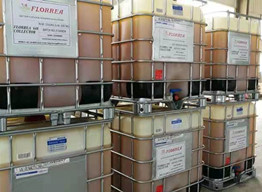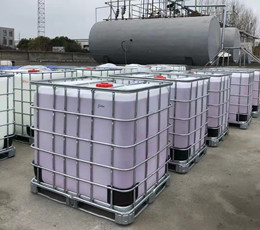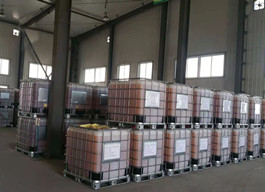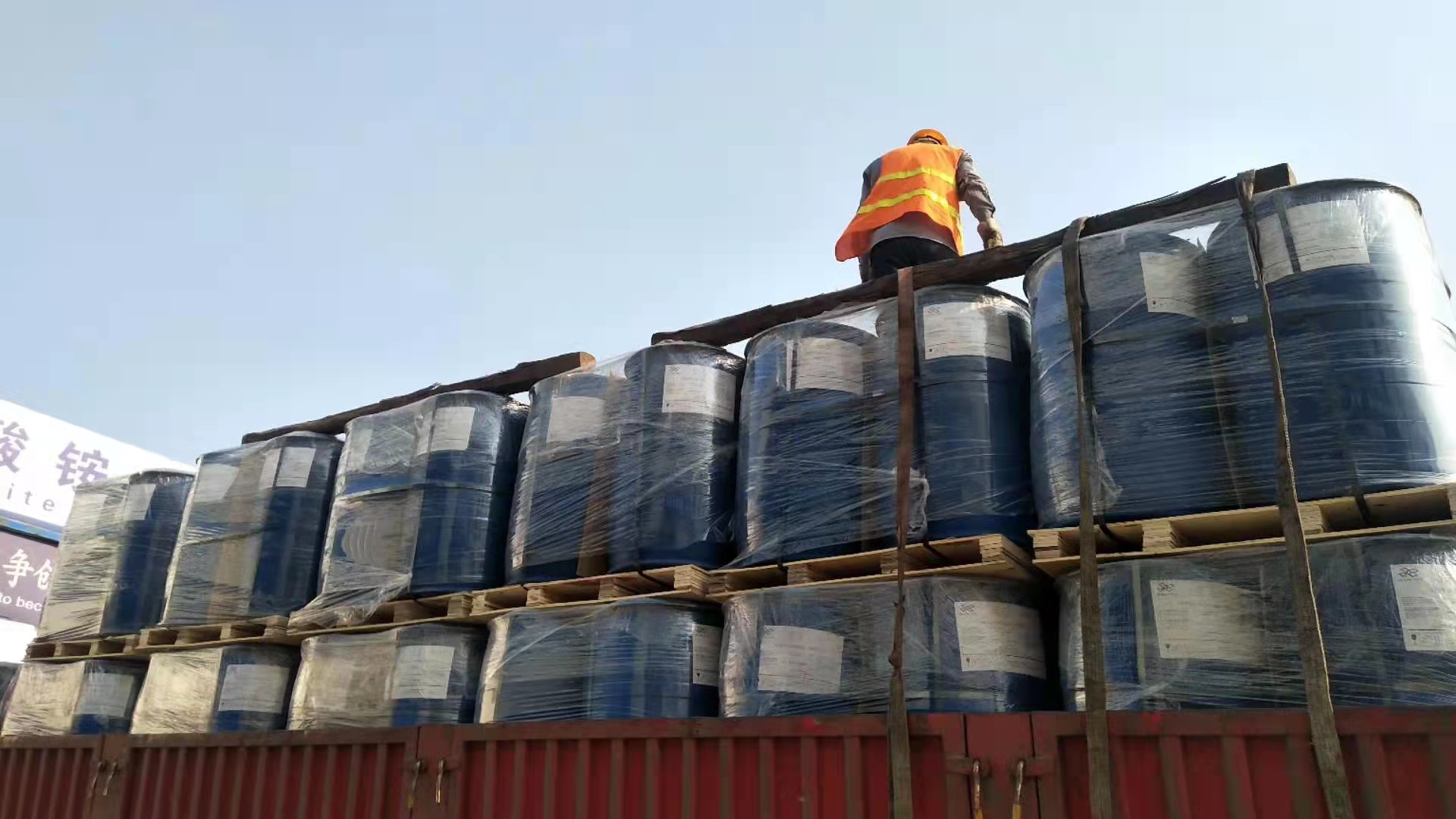
Coagulants
Florrea MAXCoagu@ solution offers a comprehensive portfolio of coagulants and flocculants that aid in the clarification process. Whether you need coagulants or flocculants, liquid, emulsion or powders, cationic or anionic products, Florrea has a cost-effective solution for your raw water and wastewater.
Florrea MAXCoagu@ solution
Florrea MAXCoagu@ solution offers a comprehensive portfolio of coagulants and flocculants that aid in the clarification process.
Whether you need coagulants or flocculants, liquid, emulsion or powders, cationic or anionic products, Florrea has a cost-effective solution for your raw water and wastewater.
Florrea application expertise ranges from operational optimization to selecting and applying chemical treatment programs while providing your lowest total cost of operation for your solid separation and color removal needs.
Florrea MAXCoagu@ coagulant, together with other chemicals, are added in water to aggregate dissolved contaminants and tiny particles into larger particles so that filtration, clarification, or any other solid removal process may be used to remove them.
Coagulation and flocculation are two, separate, crucial parts of water and wastewater treatment.
Florrea MAXCoagu@ Coagulation destabilizes the minute suspended particles by static charge neutralization, while flocculation helps them to bind together to form much bigger morphologies, so they can be more easily separated from the liquid phase.
Slurry has the characteristics of high stability, small particle size, and high water content. These characteristics make it difficult for mechanical dehydration to achieve the desired effect.
To improve dehydration of the slurry, it is necessary to add coagulants to the slurry in advance before the slurry is mechanically dehydrated.
Florrea MAXCoagu@ Coagulation is the aggregation process of colloidal particles and tiny suspended matters in water.
This aggregation process aims to break the long-term dispersion and suspension characteristics of colloidal particles in water.
Florrea MAXCoagu@ coagulants have three kinds of coagulation effects on colloidal particles in water: electric neutralization, adsorption bridging, and sweeping net capture.
Under different water quality conditions, adding different types and dosages of coagulants will produce different mechanisms of action.
Coagulant aids
When the coagulant alone cannot achieve the desired effect, a coagulant may be used as an auxiliary to improve the structure of the coagulant.
Commonly used coagulants in engineering are bone glue, polyacrylamide and its hydrolysate, active silicic acid, and sodium alginate.
The coagulant is usually a high molecular polymer, which can absorb polymer chains onto several attachment points on the surface of slurry particles, and most of the remaining polymer chains are projected into the surrounding solution and adhere to other slurry particles.
Broadly speaking, all agents that can enhance or improve the flocculation effect of coagulants are considered to be coagulants.
In engineering practice, lime-based alkaline substances are often added before filter pressing of the slurry, which can promote the hydrolysis reaction of the coagulant and can also increase the permeability of the filter cake and promote the filtration of the water in the filter cake through the filter cloth.
Coagulants and flocculation processes are used to remove colloidal impurities: suspended particles such as bacteria, clay, silts, and organic matter from the contaminated water.
This produces large flock aggregates that can be removed from the water in subsequent clarification/filtration processes.
Al (III) salts are common water treatment coagulant chemicals but suffer with a number of disadvantages such as inability to control the nature of the coagulant species formed rapidly during dilution under the prevailing raw water conditions and in competition with other reactions.
A possible way of improving the efficiency of coagulation is by the use of prepolymerized coagulants.
Aluminum-silicate polymer composite works as a better coagulant .
Clay-based materials have been widely used for effluent pretreatment and pollutant removal.
Nanocomposites, comprising of an anchoring particle and a polymer, is used as “coagoflocculants” for the efficient and rapid reduction of total suspended solids and turbidity in wastewater.
The use of such particles combines the advantages of coagulant and flocculent by neutralizing the charge of the suspended particles while bridging between them and anchoring them to a denser particle (the clay mineral), enhancing their precipitation. Very rapid and efficient pretreatment is achieved in one single treatment step
In water treatment, coagulation and flocculation involve the addition of compounds that promote the clumping of fine floc into larger floc so that they can be more easily separated from the water.
Coagulation is a chemical process that involves neutralization of charge whereas flocculation is a physical process and does not involve neutralization of charge. The coagulation-flocculation process can be used as a preliminary or intermediary step between other water or wastewater treatment processes like filtration and sedimentation.
Iron and aluminium salts are the most widely used coagulants but salts of other metals such as titanium and zirconium have been found to be highly effective as well.
At Florrea MAXCoagu@, our range of coagulants and specially selected flocculants can significantly reduce sludge generation and create alternative disposable routes or new wastewater options for our customers
What are Coagulation and Flocculation in Water Treatment?
Coagulation and flocculation are two processes that go together in water treatment by Florrea MAXCoagu@ coagulants.
They are separate, but they are used one after the other to remove particles in water.
All water contains suspended particles, including water supplies for drinking and wastewater.
The smallest of these suspended particles are known as colloids.
Colloids have a negative charge when they are suspended in water. This causes them to repel one another and become stabilised by suspension.
Stabilisation means that the particles are not clustered together, and this makes them difficult to remove from water.
The two processes of coagulation and flocculation make it possible to remove suspended particles from water as part of water treatment.
How Florrea MAXCoagu@ Coagulation Water Treatment Works?
Coagulation water treatment prevents the suspended particles from repelling one another and encourages them to form into clumps, or flocs.
Ultimately, the larger the particle, the easier it is to separate from the liquid.
This is the reason some form of coagulation is common in water treatments.
In fact, it goes back a long way, as far as Ancient Egypt. The Egyptians added seeds to water to fuse the membranes of bacteria together, making it easier to remove them.
Common examples of electrostatically charged particles in water include clay, iron, silica, paints, and oil.
By rapidly mixing the MAXCoagu@ coagulant, you can ensure you are dispersing it properly, which will promote colliding of particles.
When the water surrounding newly formed particles is clear, this indicates that the charges of the particles have been neutralised and that the coagulant has done its job. If not, then you may require more coagulant.
What is coagulation and flocculation in water treatment?
Florrea MAXCoagu@ Coagulation and flocculation are essential components of both drinking water and wastewater treatment.
They provide a reliable process for treating water turbidity (the cloudiness or haziness of a fluid typically invisible to the naked eye), which is a key test of water quality.
In wastewater treatment, they enable up to 90% reduction in suspended solids and organic loads.
All waters contain suspended particles. The smallest particles (colloids) are stabilised by the action of physical forces (static electricity) on the particles themselves and, because they all have a negative charge when suspended in water, they repel each other. This causes them to remain suspended rather than clumping together and settling out of the water. They might take days or even up to centuries to settle out!
Coagulation and flocculation are two separate processes, used in succession, to overcome the forces stabilizing the suspended particles.
While coagulation neutralizes the charges on the particles, flocculation enables them to bind together, making them bigger, so that they can be more easily separated from the liquid.
This destroys the process whereby tiny particles repel each other and promotes their consolidation to bigger ones that are able to stick together. The bigger the particle, the easier it is to separate from the liquid. The use of coagulants for treating water goes all the way back to around 2000 BC when the Egyptians used almonds, smeared around vessels, to treat river water.
These larger ‘clumps’ of particles are called micro-flocs and still cannot always be seen by the naked eye. The water surrounding these newly formed particles should be clear – and this will signal that the particles’ charges have been neutralised. If it isn’t, more coagulant may be needed. Too much coagulant and the particles will revert to repelling each other – but predominantly by the reverse charge.
Rapid mixing ensures the coagulant is properly dispersed to promote particle collisions. The metal coagulant hydrolysis products formed within 0.01 to 1.0 seconds tend to be the most effective for destabilisation – this is why adjustment of pH and post-dosing of more coagulant is rarely effective after the initial coagulant addition.
One common type of rapid mixer is called a back-mix reactor, which normally consists of square tanks with vertical impellers. In many instances, they produce poor results, and some tends to design in-line mixers with velocity gradient control to provide the best conditions for rapid mixing.
What is flocculation in wastewater treatment?
Following coagulation (“Charge Neutralisation”), a second process called flocculation needs to take place. This is the growth of small, neutral particles into larger particles.
Flocculants are the agents which promote this clumping of fine particles into ‘floc’ that can then be readily separated from the water.
They are invariably polymers.
The flocculation process is a gentle mixing stage that increases the size of the particles from micro-floc to large, visible suspended particles called pin-flocs.
Additional collisions between pin-flocs cause them to produce even larger, ‘macro-flocs’. The flocculants aid in this by being long-chain polymers with low charge to involve entanglement, enhanced van der Waal’s forces, and hydrogen bonding between the particles.
Once these flocs have reached an optimum size and strength, the water is ready for solids-liquid separation.
This can be filtration, centrifugation, sedimentation, or flotation by Florrea MAXCoagu@ coagulants and flocculants
The role of polymers in flocculation
Polymers are a range of water-soluble macromolecular compounds that have the ability to stabilise or enhance flocculation of the constituents in a body of water. They are added as part of the flocculation process to help strengthen and increase the settling weight of the floc.
Polymers can be either natural or synthetic. Natural polymers also date back to ancient times, with Sanskrit literature from around 2000 BC referencing the use of crushed nuts to clarify water. Natural polymers are virtually free of toxins and are biodegradable. Synthetic polymers are more commonly used because they are more effective, reliable, reproducible, and cost-effective.
What does the coagulation and flocculation process remove in wastewater treatment?
Florrea MAXCoagu@ Coagulation and flocculation remove a large number of organic compounds as well as suspended particles, including inorganic precipitates.
The process removes particles and dissolved matter; however, the water may still contain pathogens, including viruses and bacteria. Pathogens are generally only removed if they are attached to the dissolved substances that are removed by coagulation and flocculation.
This is the first step in wastewater treatment and turning it into potable water—coagulation and flocculation remove many of the particles that make it complicated to disinfect water.
Thanks to Florrea MAXCoagu@ coagulation and flocculation, a smaller amount of chlorine needs to be added to disinfect the water. And using less chlorine saves money and makes the water safer.
How Does Temperature Affect Coagulation in Water Treatment?
Temperature can have a significant effect on coagulation and flocculation.
For all coagulants, floc formation is slower at lower temperatures. At some temperatures, with certain coagulants, flocs may break up and never reform to their original size.
This is most likely in temperatures around 15°C. Recovery of floc size is more reversible at lower temperatures.
Is Coagulation Caused by Bacteria in Water Treatment?
Suspended solids in water can be the result of natural causes, arising from organic materials such as algae, or inorganic materials such as sediment or silt.
Algae thrive in both freshwater and saltwater, but when they die, they are decomposed by microbes.
Sediment or silt mainly comes from run-off and erosion.
There can be various forms of solid pollutants in water, added to the environment by humans. These include pathogens, wastewater effluent, sewage and airborne particles.
Rather than being caused by bacteria, coagulation water treatment is the process of removing these solids from water, including bacteria.
However, although coagulation can remove particles and some dissolved matter, there may still be pathogens in the water.
According to the World Health Organisation (WHO), coagulation only removes between 32 and 87 per cent of bacteria.
How to Maximize the Effects of Water Treatment?
Coagulation is a long-established water treatment, but it doesn’t remove all bacteria from water systems.
It makes sense, therefore, to use additional treatments to protect the integrity of water supplies.
Florrea MAXCoagu@ coagulants are highly charged inorganic, organic and blended coagulants for clarification of industrial water and wastewater
Florrea Maxcoagu@ solution offers products are ready to use water-soluble coagulants, ranging from polymeric inorganic and organic coagulants to single container blends.
They are designed to function in a variety of industrial water and wastewater treatment applications, including use as a
-
primary coagulant for removal of colloidal turbidity and color for raw water clarification
-
demulsifier to facilitate liquid solids separation in dissolved gas flotation units for primary wastewater treatment
-
settling and filter aids used separately or in conjunction with organic flocculants.
The Florrea MAXCoagu@ product line encompasses a comprehensive portfolio of chemistries ranging from classic inorganics to modified natural products, such as amphoteric tannins and starches, to modern synthetic organic chemistries.
They encompass relatively low to high cationic charge densities.
One of the highest costs in many water and wastewater treatment plants is residuals (sludge) disposal.
Florrea works with their customers to choose coagulants that can minimize sludge production, which is a high cost to the plant (i.e., we always work with customers to minimize their total cost of operation).
What are the Common Coagulants Used in Water Treatment?
Today, there are two types of coagulants that are most commonly used in water and wastewater treatment which Florrea MAXCoagu@ can offer:
Organic and inorganic.
Inorganic coagulants offered by Florrea MAXCoagu@ include:
-
Aluminium coagulants - e.g. aluminium sulphate, aluminium chloride and sodium aluminate
-
Iron coagulants - e.g. ferric sulphate, ferrous sulphate, ferric chloride and ferric chloride sulphate
Florrea MAXCoagu@ Inorganic coagulants will remove most suspended solids. Once you add them to water, they form aluminium or iron precipitates. These absorb impurities and clean the water. However, they do create large amounts of sludge that is rich in metal. They can also alter the pH of water significantly because they consume alkalinity in the water.
Organic coagulants
Florrea MAXCoagu@ Organic coagulants can be applied cost-effectively at lower dosages and produce far lower quantities of sludge.
They have minimal impact on pH levels.
Florrea MAXCoagu@ Inorganic coagulants
Both aluminium and iron coagulants have been proven to be very effective at removing most suspended solids.
Florrea MAXCoagu@ coagulants offer a number of advantages:
-
Enable highly charged ions to give a high charge density to neutralise suspended particles, which allows hydrated inorganic hydroxides to form and produce short polymer chains that enhance microfloc formation and heavy floc
-
Capable of removing a portion of the organic precursors which may combine with chlorine to form disinfection by-products
-
Low unit cost and widespread availability
They have some disadvantages:
-
They create large volumes of floc, rich in metal, which must be disposed of in an environmentally appropriate manner, which can add significant cost to disposal.
-
They can significantly alter the pH of the water, where pH is critical for effective coagulation, necessitating pH control. They also require corrosion-resistant storage and feed equipment.
-
Aluminium sulphate and chloride, ferric sulphate and chloride and ferrous sulphate are highly acidic, destroy alkalinity and lower pH. Sodium aluminate, on the other hand, will add alkalinity and raise pH.
The most commonly used inorganic chemical coagulants in water treatment
Aluminium sulfate is the most commonly used chemical for coagulation in wastewater treatment. Additional commonly used coagulants include sodium aluminate, ferric sulfate, and ferric chloride.
Aluminium Sulfate
Aluminium sulphate is the most widely used aluminium coagulant. It is available in a number of solid forms such as block, kibbled, or ground and is also available as a solution. When added to water, the acidic coagulant and the natural alkalinity of the water reacts to form an aluminium hydroxide floc, which usually consists of calcium bicarbonate. pH control is important in coagulation, for both the removal of turbidity and colour and also to maintain satisfactory minimum levels of dissolved residual aluminium in the clarified water.
Sodium Aluminate
Sodium aluminate is formed by combining sodium oxide and aluminium oxide. Solid forms of this chemical usually contain 70-80% sodium aluminate, while liquid forms contain around 30% sodium aluminate. Due to the low molecular weight of AI, sodium aluminate solutions reduce chemical sludge production compared to iron. Moreover, aluminates raise the alkalinity of the water, eliminating the need for lime or hydroxides.
Ferric Sulfate
Ferric sulfate is a type of iron coagulant that is often used in conjunction with chlorine and can provide a denser floc than aluminium sulfate. Compared to alum, ferric sulfate has some advantages; for example, the flock particles of ferric hydroxides have a higher density than alum flocks and are more easily removed by sedimentation. However, there are also disadvantages as it produces a significantly heavier hydroxide sludge and it is difficult to dissolve.
Ferric Chloride
Ferric Chloride works as a flocculant and coagulant. It is versatile in the water treatment industry and is an alternative to ferric sulfate. It generally promotes faster sedimentation, especially in cold water. However, it is the less popular choice, as chloride can increase water’s corrosivity.
Florrea MAXCoagu@ Coagulants and Flocculants for Solid-Liquid Separation
Florrea MAXCoagu@ Coagulant and flocculant treatment are applied for
suspended solids, organics and oil removal,
sludge dewatering,
lime softening.
In influent water and effluent wastewater treatment, clarification aids like coagulants and flocculants help remove suspended solids, including oil, organics (TOC and color) and hardness.
In turn, this allows our customers to prepare their influent raw water for efficient use as process water, meet wastewater discharge regulations reliably, all while allowing for cost-effective water reuse.
Florrea experts provide customers with the peace of mind that can only come from working with professionals who have treated influent and wastewater clarifiers of all types for decades.
Florrea MAXCoagu@ solution full line of coagulants, flocculants and solid-liquid separation products are designed to improve the performance of your mineral processing and mine wastewater treatment systems.
Florrea have experience in developing coagulants that address the challenges of water treatment systems.
Armed with knowledge and proven technology, our representative will work with you to determine the better solution to help ensure local, state, and federal compliance while helping to improve your cost.
Florrea MAXCoagu@ Coagulants can enhance the efficiency of flocculants used for solids removal in wastewater clarification.
Coagulants neutralize surface charges, thus increasing the performance of the flocculant.
Florrea Organic coagulants include:
-
MAXCoagu@ Florrea 480A Series coagulants
-
MAXCoagu@ Florrea 480W Series coagulants
-
MAXCoagu@ Florrea 480Y Series coagulants
Both MAXCoagu@ Florrea 480A and 480W Series coagulants have been proven to be very effective at removing most suspended solids.
MAXCoagu@ Florrea 480Y Series coagulants are particularly good at oils and fats.
They offer a number of advantages:
-
Enable relatively low charge density to neutralise lower charged suspended particles, more effectively. Produce longer polymer chains that enhance microfloc formation without metals or hydroxides
-
Capable of removing a portion of the organic precursors which may combine with chlorine to form disinfection by-products
-
Produce small floc volume
-
Liquid forms, non-corrosive, ready for direct use.
-
Do not impact and are rarely or marginally affected by pH
They have some disadvantages:
-
Higher unit cost
-
High dosages are needed if charge demand is high
-
Low-density floc – does not always settle well.
Florrea MAXCoagu@flocculants can aid sedimentation in water clarification. These polymers could be used with a coagulant for charge neutralization.
Stronger floc means improved water release which translates into dryer filter cake. That means less sludge volume for disposal.
Florrea MAXCoagu@ solution offers polymers of different ionic charges and molecular weight.
Which coagulant should you choose for water treatment?
In water treatment, metal coagulants such as the ones listed above are commonly used. Availability and affordability are the key considerations that generally influence the coagulant used. Aluminium sulfate is commonly available and affordable as well as being very effective.
However, other types of coagulants are also available:
-
Synthetic coagulants may have high charge densities on relatively large molecules. Depending on how they are made, some of the synthetic derivatives may behave as a flocculant.
-
Biopolymer coagulants from natural sources (such as fungi and plant sources). Generally, these produce less sludge, are less toxic, and are considered to be safer.
How Flocculation Works?
The flocculation process follows coagulation in water treatment.
Florrea MAXCoagu@ Coagulation is the charge neutralisation of fine particles, and flocculants are the agents that then promote the clumping of these particles together.
Flocculants are polymers, materials consisting of long, repeating chains of molecules.
They are water-soluble, and will stabilise or enhance the flocculation of particles by strengthening flocs or adding to their weight. Polymers can be natural or synthetic.
Natural polymers, such as the seeds the Egyptians used, are toxin-free and biodegradable, but synthetic polymers are now more widely in use.
Flocculation is a gentler mixing stage, increasing the size of particles from micro-flocs to pin-flocs. Pin-flocs are large, visibly suspended particles. From this, flocculation causes them to grow into even larger clumps, known as macro-flocs.
Because flocculants are long-chain polymers, they carry a low charge, encouraging hydrogen bonding between particles.
Once the flocs have reached an optimum size, you can separate solids and liquids in the water.
This can involve various processes, including:
· Filtration
· Centrifugation
· Sedimentation
· Flotation.

Better mining reagents and solutions.innovative flotation reagents.
Creating Value for Environment, Society & Business
Related News
Tailings Management
Florrea partners with mineral processing companies to engineer tailings dewatering solutions that recover as much water as possible, giving you a more sustainable tailings disposal process while extending the life of your tailings storage facility and try to increase as much as possible the amount of a traditional tailings disposal solution – which ultimately helps to defer the heavy cost of building a new facility.
Zim container ship burns off coast of Canada
Zim container ship burns off coast of Canada
Florrea Dispersants
Florrea Dispersants




